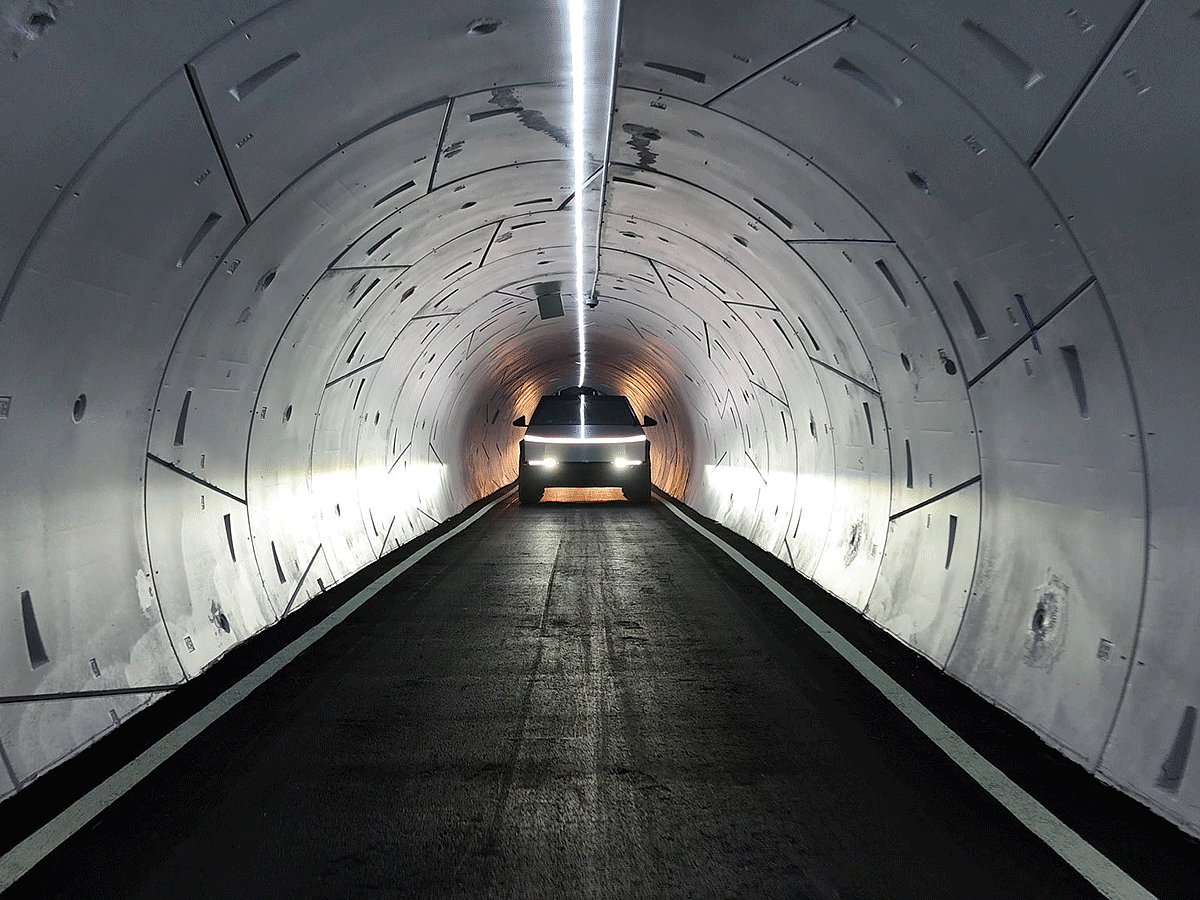Dubai: Dubai is preparing to welcome Elon Musk’s Boring Company in what could be a turning point for urban transport in the Middle East. The Dubai Loop, expected to go operational by the second quarter of 2026, promises to reshape how people move around the city, fast, clean, and underground.
While we await more details from RTA, here’s a closer look at what it is, how it works, and what makes it different from anything Dubai has seen before.
What exactly is the Loop?
Loop is a high-speed, all-electric underground transportation system developed by The Boring Company (TBC), the infrastructure venture founded by Elon Musk.
Also Read
Dubai RTA reviews Elon Musk’s Loop, explores next-gen mobility futureElon Musk’s Dubai Loop project to be operational by mid-2026Sheikh Hamdan announces details of Dubai Loop project with Elon MuskUnlike a traditional subway, Loop uses Tesla electric vehicles that move through dedicated tunnels, ferrying passengers directly to their chosen destinations, without stopping at intermediate stations. Think of it as “Teslas in tunnels”, but operating as a public transport network.
This express model means that while a subway train must halt at every stop between Point A and Point B, Loop riders will travel straight to their destination, cutting travel times dramatically.
Why Dubai?
Dubai’s selection as the first Middle East city to host a Loop system is no coincidence.
The emirate’s leadership has long positioned Dubai as a testbed for next-generation mobility, from autonomous taxis to aerial transport. The Loop aligns closely with the goals of Dubai’s Clean Energy Strategy 2050 and Dubai 2040 Urban Master Plan, both of which focus on sustainability and seamless connectivity.
How will Dubai’s Loop system work?
Built in partnership with Dubai’s Roads and Transport Authority (RTA) and The Boring Company, the system will eventually expand across the emirate, connecting key commercial, residential, and tourist districts.
With vehicles capable of speeds up to 100 miles per hour (160 km/h), travel between major hubs could take just a few minutes, an appealing prospect in a city that already prides itself on futuristic mobility.
What’s next?
Construction on the Dubai Loop pilot phase is expected to begin soon, with operations targeted for Q2 2026. Once completed, the system will be able to transport tens of thousands of passengers per hour and drastically reduce commute times across the city.
The long-term vision is to scale the system into a citywide network, potentially handling over 100,000 passengers per hour once fully developed.
If successful, the project could make Dubai a global benchmark for high-speed, zero-emission, underground mobility — and offer a glimpse into what future cities may look like.
What’s the difference between Loop and a metro system?
A metro line has large stations and fixed stops, while the Loop operates more like an underground highway, with many smaller, distributed stations, some occupying just two parking spaces. This flexibility allows stations to be embedded in shopping centres, office towers, or even residential areas, enabling uncongested entry and exit points.
As per the Vegas Loop and the Music City Loop projects, the Loop vehicles will run on demand, meaning passengers board individual Tesla cars that take them directly to their destination without intermediate stops. This makes Loop faster, quieter, and less crowded than conventional subways.
How safe is it?
The Boring Company says safety is one of its biggest priorities.
Each tunnel is equipped with redundant ventilation systems, emergency exits, fire detection and suppression systems, and 24/7 communication links to an Operations Control Centre.
The system has already been vetted by the US Department of Homeland Security’s Transportation Security Administration (TSA), which awarded the Vegas Loop its Gold Standard Award — the highest possible rating for security and emergency preparedness.
Tunnels are also among the safest places to be during an earthquake. They move uniformly with the ground, avoiding the falling debris risks that affect surface structures.
What has The Boring Company built so far?
The company’s first operational project, the Vegas Loop, has already transported more than 3 million passengers since 2021.
Currently under expansion, Vegas Loop will stretch across 110 kilometres with 104 stations, connecting Harry Reid International Airport, Allegiant Stadium, and Downtown Las Vegas.
Following its success, the company has announced a similar project in Nashville, Tennessee, known as the Music City Loop, slated to begin construction in late 2025.
At a glance: The Dubai Loop
Launch: Q2 2026
Length: 17 km (pilot phase)
Stations: 11
Capacity: 20,000 passengers/hour (pilot), 100,000+ when expanded
Top speed: Up to 100 mph (160 km/h)
Technology: All-electric, zero-emission Tesla vehicles
Partners: The Boring Company, RTA, Vy Capital
Sign up for the Daily Briefing
Get the latest news and updates straight to your inbox
Network Links
GN StoreDownload our app
© Al Nisr Publishing LLC 2025. All rights reserved.
